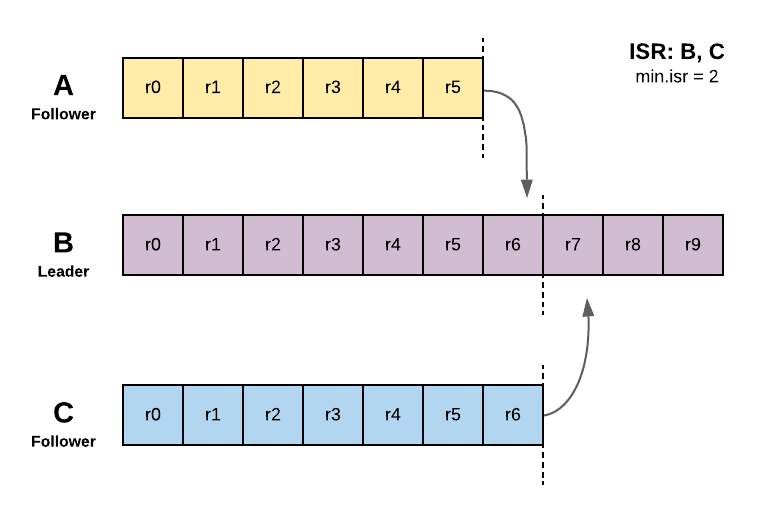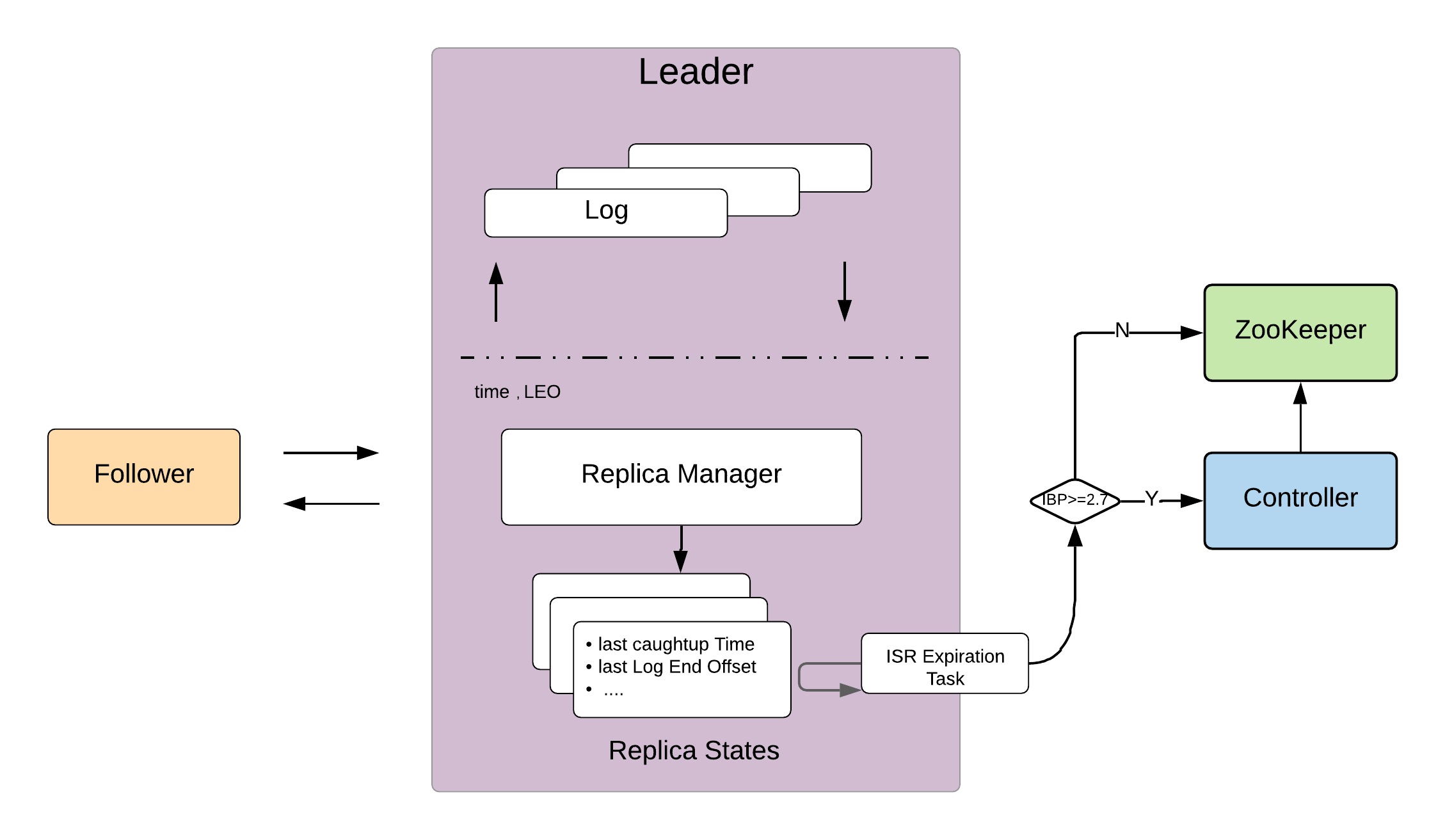...
Follower replicas fetch data from the leader replica continuously to catch up with the leader. Follower replica is considered to be out of sync if it lags behind the leader replica for more than replica.lag.time.max.ms
- If a follower has not sent any fetch requests within the configured value of replica.lag.time.max.ms. This can happen when the follower is down or it is stuck due to GC pauses or it is not able to communicate to the leader replica within that duration.
- If a follower has not consumed up to the leader’s log-end-offset at the earlier fetch request within replica.lag.time.max.ms. This can happen with new replicas that start fetching messages from leader or replicas which are kind of slow in processing the fetched messages.
But we found an issue of partitions going offline even though follower replicas try their best to fetch from the leader replica. Sometimes, the leader replica may take time to process the fetch requests. This can be due to having issues in memory or disk while reading the respective segment data or processing fetch requests because of intermittent CPU issues. it makes follower replicas out of sync even though followers send fetch requests within replica.lag.time.max.ms duration. We observed this behavior multiple times in our clusters.
...
Follower replicas send fetch requests to leader replica to replicate the messages for topic partitions. They send fetch requests continuously and always try to catchup leader’s log-end-offset.
replica.fetch.wait.max.ms property represents wait time for each fetch request to be processed by the leader. This property value should be less than the replica.lag.time.max.ms so that a follower can send the next fetch request before a follower replica is considered out of sync. This will avoid frequent shrinking of ISRs. This allows a follower replica always tries its best to avoid going out of sync by sending frequent fetch requests within replica.lag.time.max.ms.
Each broker runs a ISR update task("isr-expiration") at regular intervals to update the metadata in ZK(directly or via controller if IBP version >= 2.7) about insync replicas of all the leader partitions of this broker. Its interval is 0.5 * replica.lag.time.max.ms. This allows an insync follower replica can lag behind the leader replica upto 1.5 * replica.lag.time.max.ms.
Leader replica maintains state of each follower replica that includes
...
<Topic, partition>: <events, 0>
replica.lag.max.time.ms = 10_000
leader.fetch.process.time.max.ms = 500
Assigned replicas: 1001, 1002, 1003, isr: 1001,1002,1003, leader: 1001
...
While the fetch request is being processed, insync replica check for follower replica(id:1002) checks on the leader replica (id: 1001) returns return true as there are pending fetch requests with fetch offset >= LEO at earlier fetch request.
Once the fetch request is served, lastCaughtupTime is set as ty+25. Subsequent insync checks would result in true as long as the follower replica sends fetch requests at regular intervals according to replica.lag.time.max.ms and replica.fetch.wait.max.ms. Leader will also lose the leadership and one of the insync replicas becomes a leader.
Public Interfaces
Below property is added to the broker configuration.
Configuration Name | Description | Valid Values | Default Value |
follower.fetch.pending.reads.insync.enable | This property allows a replica to be insync if the follower has pending fetch requests which are >= log-end-offset of the earlier fetch request. | true or false | false |
leader.fetch.process.time.max.ms | This property represents the maximum time in milliseconds that a leader can process the follower fetch requests. If it takes more than this configured time then it relinquishes the leadership. | > 0 | 500 |
Compatibility, Deprecation, and Migration Plan
...

